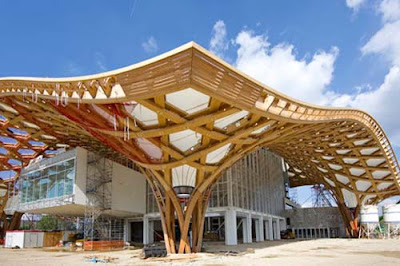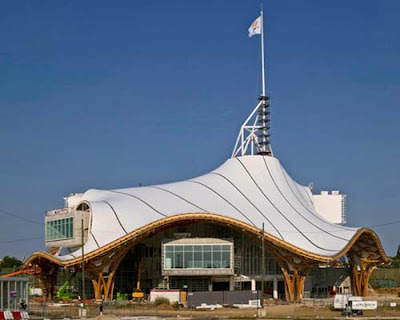



The Centre Pompidou-Metz is a vast modular structure around a central spire rising 77m above ground, a nod to the Centre Pompidou which opened in 1977. The hexagonal roof structure, which echoes the floor-plan, covers a building with a total surface area of 10,700 sq m, including 5,000 sq m of gallery space. Other areas such as the Forum, the restaurant terrace and the garden provide further opportunities to exhibit works. The Centre Pompidou-Metz is surrounded by two gardens and a terrace. This gently sloping terrace provides a direct pedestrian link to the railway station. Partly landscaped, it has the same dimensions as the Piazza in front of the Centre Pompidou. The terrace was designed by Agence Nicolas Michelin Associés and Paso Doble, who also created the garden to the north of the Centre Pompidou-Metz. The five-acre garden is planted with flowering cherries, and its grassy folds enable rainwater to be collected from the roof and terrace. There are also numerous paths for visitors to make their way around and through the park.
No comments:
Post a Comment